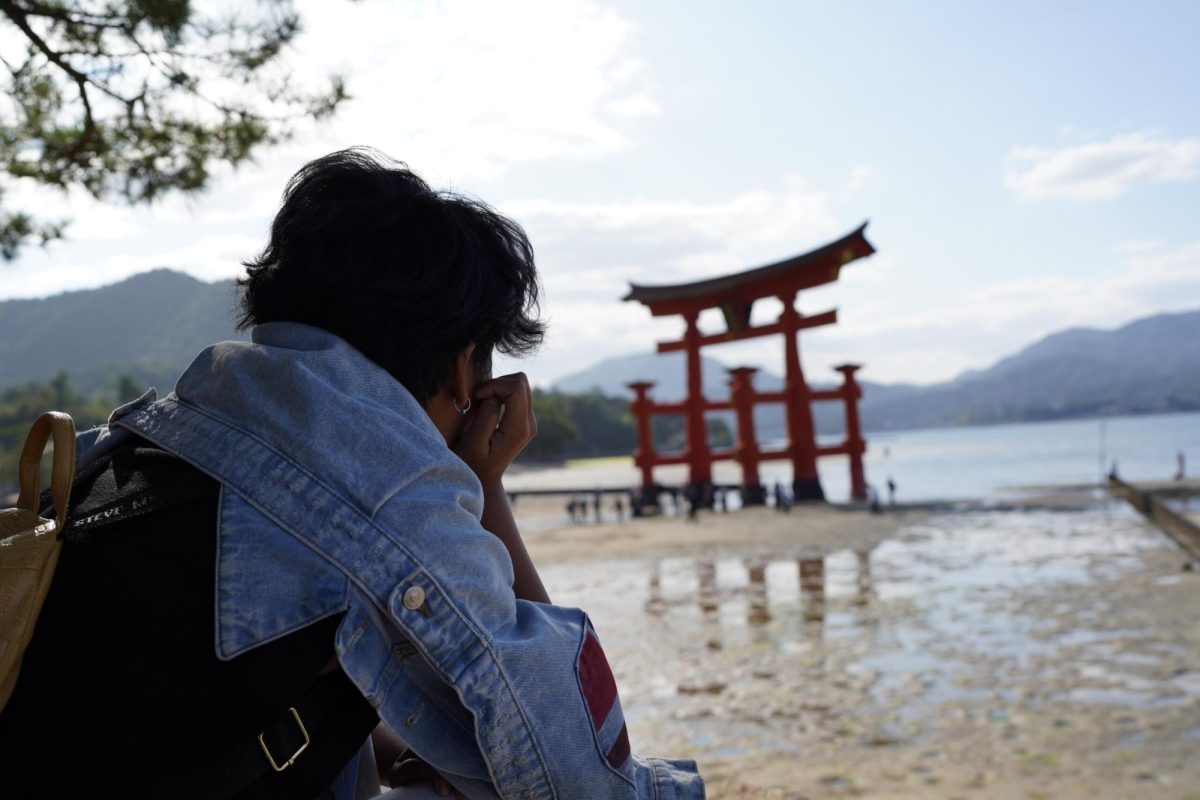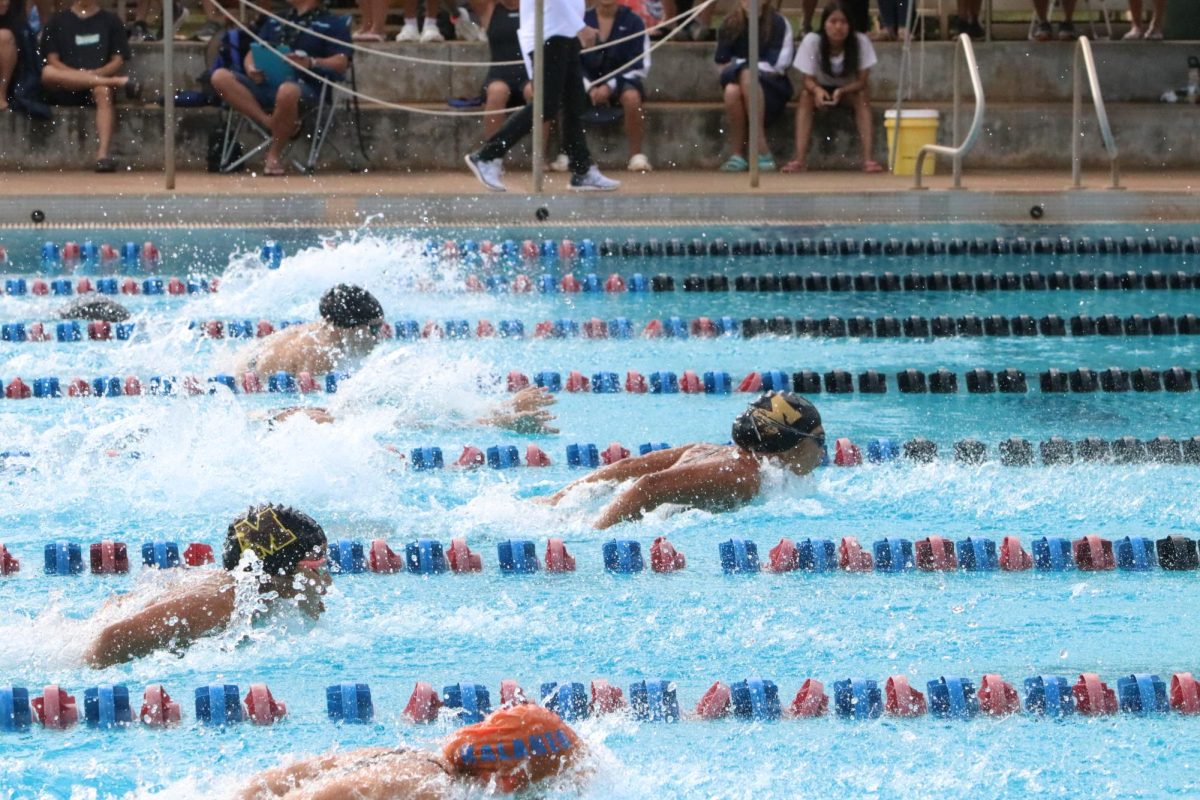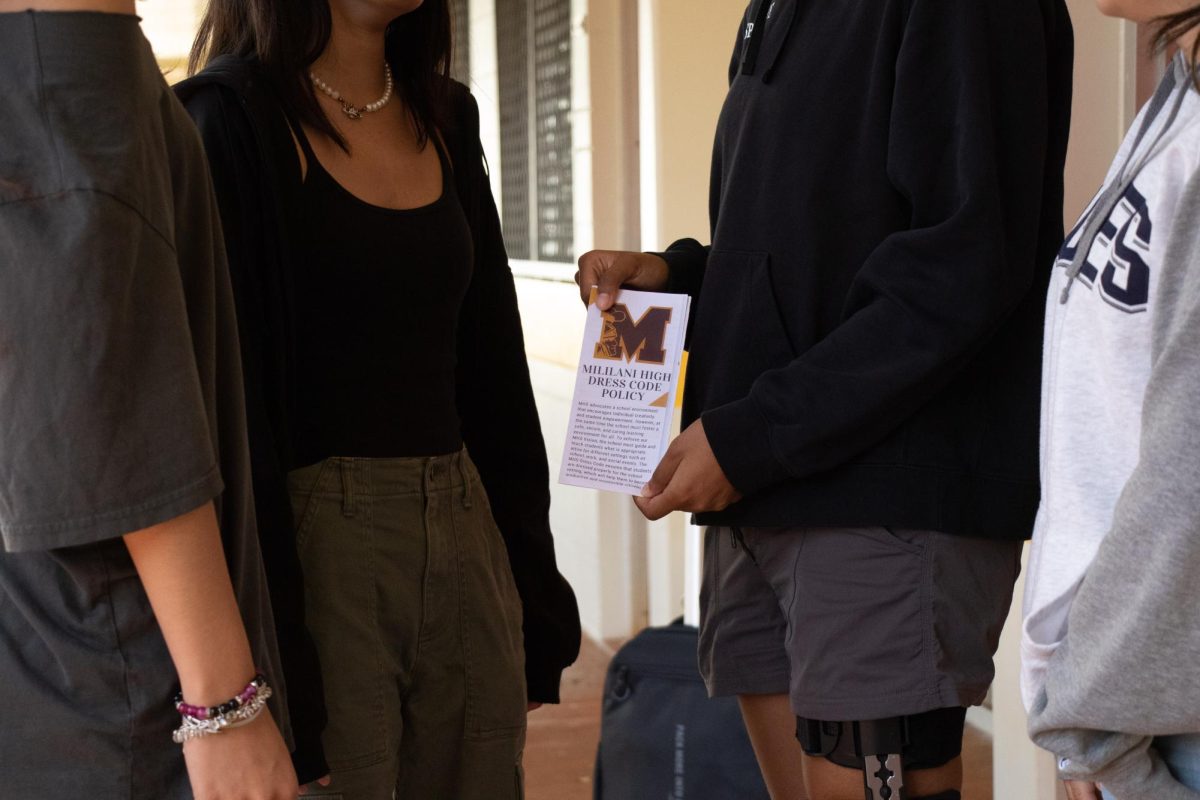Castillo: JROTC Executive Officer, Future Pilot, STEM Scientist
February 7, 2019
Throughout his years in high school, Senior Ryan Castillo has had a love for aviation and science. He has spent all four of his years at MHS in Junior Reserve Officers’ Training Corps (JROTC) and continues to build his character. With progress made in his various interests, Castillo aims to reach high goals in the future. He currently attends George’s Aviations Services for flight school, has been in the Civil Air Patrol (CAP) for a few years and has worked on a project funded by the University of Hawai’i (UH) and the National Aeronautics and Space Administration’s (NASA).
“The first time I flew a plane was (when) I was 12 years old. They (CAP) give us five free flights on a plane — they let you fly it. So I was 12 and (I had) no idea what to expect at all,” said Castillo.
Castillo’s passion for aviation emerged at an early age. Over the years, this love has only grown stronger as he progressed further into the field of aviation. “So (the) first time I knew I wanted to be a pilot was when I saw an air show. So I was probably like, three-years-old. Somewhere around that age, I saw planes flying and I used to be really (inquisitive) about everything. So I was like, ‘How does that plane fly? How does a person fly the plane?’ and then I actually got to talk to one of the pilots after (the show) and then I was like, ‘Oh, this is really cool. I want to do that,’” said Castillo.
A current Battalion Commander for JROTC, Castillo spent much of his time in the program building his character. From second semester on, Castillo has served the role of Executive Officer. “So as the battalion commander, I had to oversee basically all the people that were on the staff, so I’ll have students (that are) cadets on there. And now as the executive officer, I basically have more of a managing role because, as the commander, (I have to) pretty much oversee to make sure nothing is going wrong. But as the Executive Officer I’m more like down doing the work with them as well. (I have to) make sure they’re getting everything done and helping them out,” said Castillo.
Castillo’s involvement with JROTC also played a key role in his aspiration to become a pilot. His interest in aviation and the military stemmed from a young age. “I realized that a lot of astronauts — because I want to be an astronaut — were military pilots. So around elementary school, I decided that I wanted to join the military so I can follow that path,” said Castillo.
Castillo began gaining experience in the field since the age of 12. He now actively attends flight school and CAP. “So CAP — my mom’s friend was actually a volunteer. So he’s not in the military, but he joined to help out with them because we do a lot of missions. So he told me, ‘Hey, if you want to be a pilot, you should join this program. It’s really good to build your leadership skills and everything else.’ So I joined when I was 12. And it’s pretty good. Because I mean, you have to pay — there’s like a (renewable) membership, which is like 30 bucks a year. So it’s not that bad. But other than that, you just show up to a squadron and be like, ‘I want to join and get started.’ And then in terms of flight, all you have to do is call them and be like, ‘Hey I want to learn how to fly.’ They’re gonna set up dates for you to come in and practice,” said Castillo.
While they’re both associated with aviation, flight school and CAP are different from one another. However, the two have helped Castillo improve in different aspects of his character. “I’m part of the Civil Air Patrol, we are the auxiliary of the Air Force and this program has helped me in many ways. It has taught me leadership, responsibility, public speaking and how to be a better person.” I have learned about my true abilities and how to improve them. We also perform search or rescue duties for the Coast Guard and the disaster relief. For flight training, the current program I am in is at George’s Aviation Services, where I currently have academic classes,” said Castillo.
In addition to his aviation career, Castillo has found a special interest in Science, Technology, Engineering and Math (STEM). Throughout his senior year, Castillo has worked intensely on a STEM Capstone project that started in 2018. “So first off, it’s a project that I’m working on at the UH. It’s a program that was funded by NASA. I’ve been working on it ever since summer 2018 and then I’m working on it as a Stem Capstone project. So I had to make some modifications to make it fit as a capstone project,” said Castillo. “Since I want to be an astronaut, I was like, ‘Okay, I want to do something that has to do with Mars,’ which is a planet that a lot of space agencies want to go to and research. So I was thinking, ‘Okay, what are the problems with getting to Mars? One of it is having precision landing site.’ So like, let’s say, ‘Okay, I want the rocket with the astronauts or like a payload to land like 100 meters from its intended target.’ Because in the past, basically, what you do is the thing goes into the atmosphere, like five kilometers per second, and then they basically (deploy an) airbag and (it) just bounces and it says, ‘Okay, it’s just going to land (in) this general area, we don’t know where it lands because it can bounce wherever.’ But what I want to do is focus on making the entry trajectories more accurate. So it can be like, ‘Okay, we want here,’ and we know it’s gonna land and not just bounce around, like in the past. So I decided to do that.”
The process to become a pilot is long and challenging. For Castillo, he met various obstacles both in flight school and CAP. “For flight school, the amount of academics I have to put in is a lot. They gave us a textbook that’s like 800 pages; it’s like driver’s ed on steroids, basically. And then you’re gonna have to take a written test, which is kind of like your driver’s permit test, except really long. And then another (challenge) was, in order to promote in the CAP, you have to do written tests and you have to do a physical test. One of the biggest issues I had a couple years ago was that the physical test was pretty hard for me — the only part I could not do as good (on) was the running part because I had to run an eight minute mile but I was terrible at running before, and I’d get like eight and a half minutes. I was stuck on a rank for two years straight. I thought about quitting because I was like, ‘I can’t continue.’ But then eventually, what happened was that there was this Marine Corporal that joined our program — he basically mentored me and helped me out.” said Castillo.
Throughout Castillo’s journey, he has experienced many hardships. However, the help of a strong support system has helped him push through the difficult times. “So in my life, first off, my mom basically helps me with everything. I mean, she’s really supportive (with everything) I want to do. She doesn’t be like, ‘Oh, you shouldn’t do that, because it’s really hard to do or anything. She’s really supportive. Because I mean, astronauts out of like 30,000 people, only 10 people get selected and — grandparents as well, because they’ve raised me for like, a lot of my childhood because my mom’s single so she had to work a lot. My grandparents helped me a lot and basically molded me into who I am today. And then I also have the mentors and CAP and JROTC that helped me out with a lot — like I’m finding the Air Force Academy and some people I know actually graduated from the academies and they’re helping me out with the process and writing me letters of recommendation all that,” said Castillo.
Castillo was nominated by Senator Mazie Hirono to attend the Air Force Academy. If he’s unable to get in, Castillo plans on attending its prep school; he also wants to further his explorations in science.



